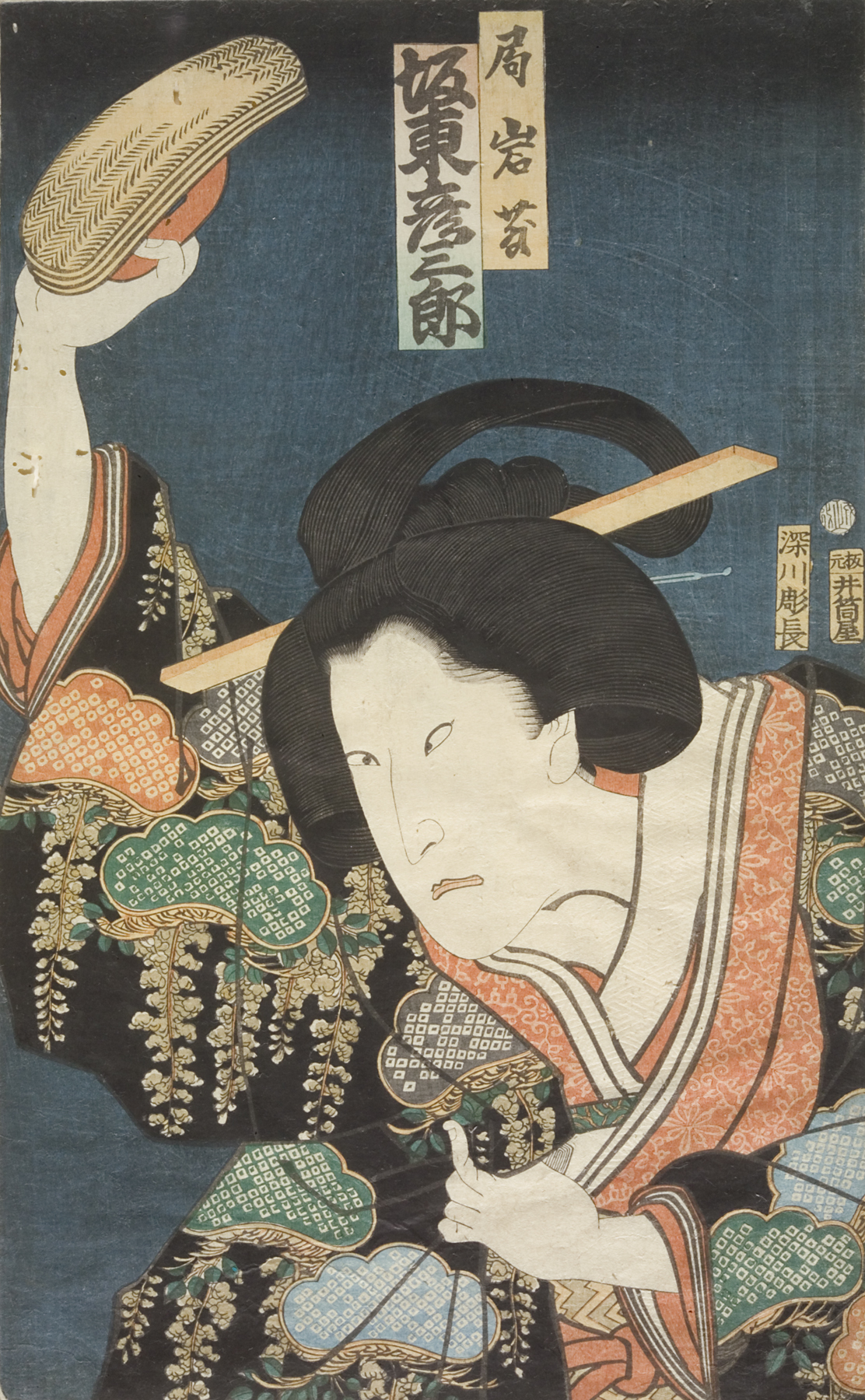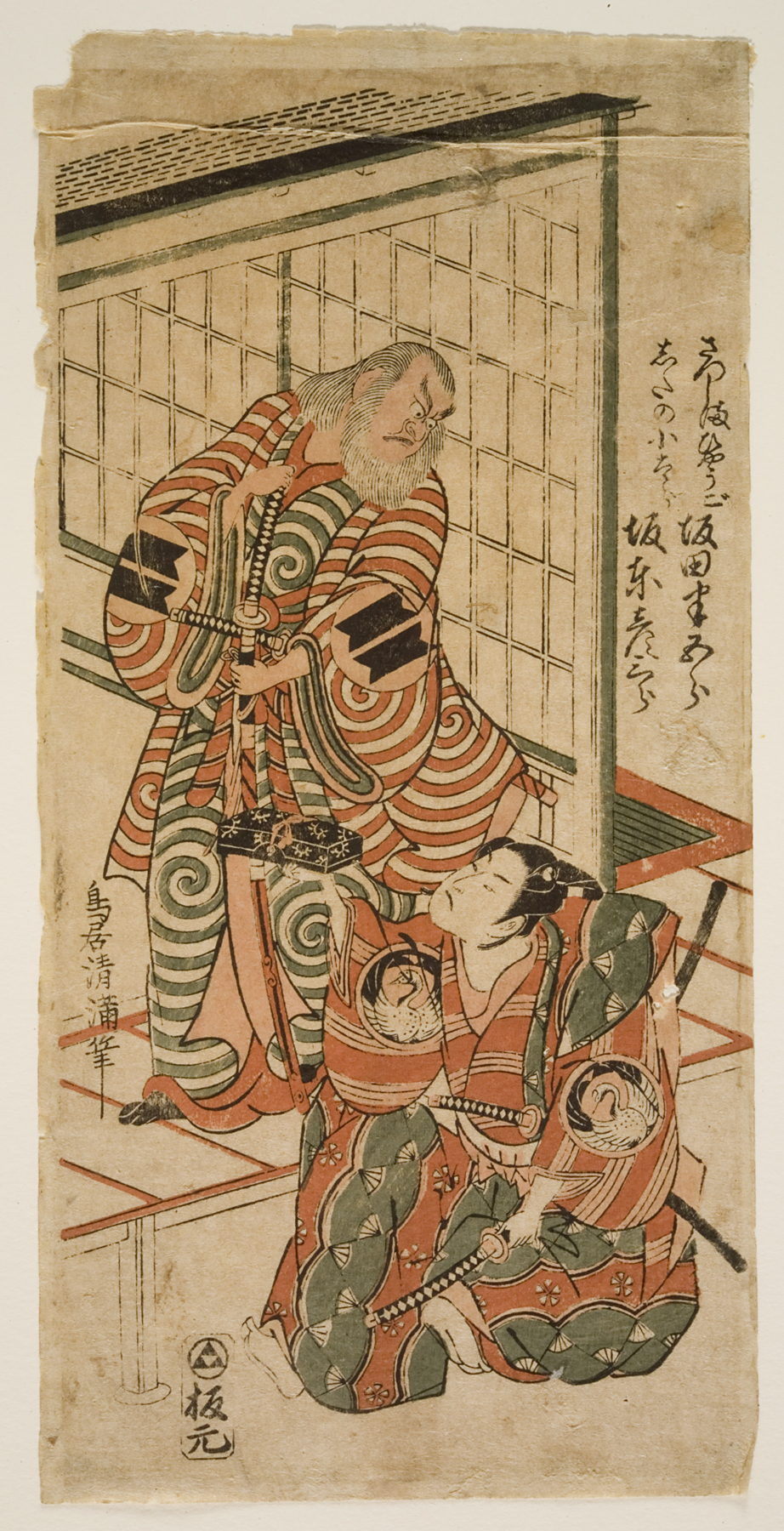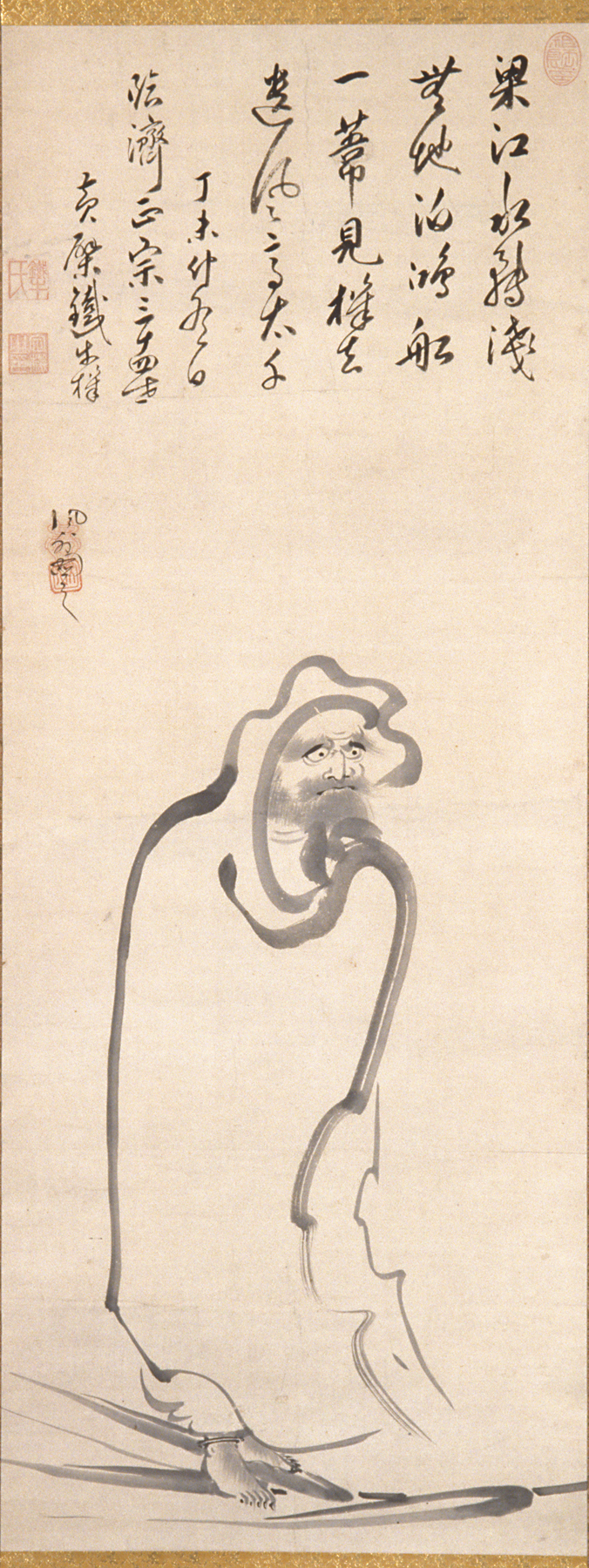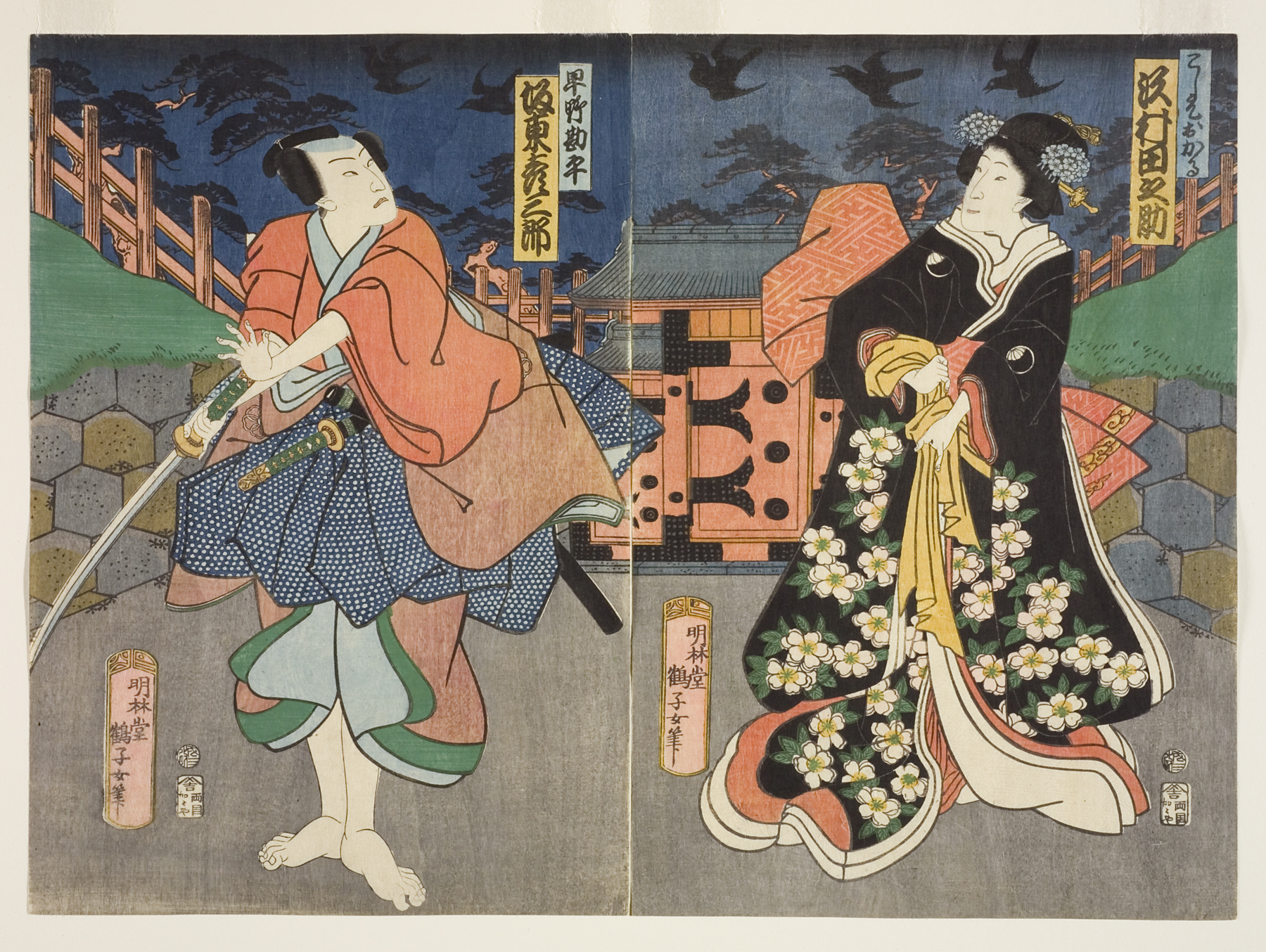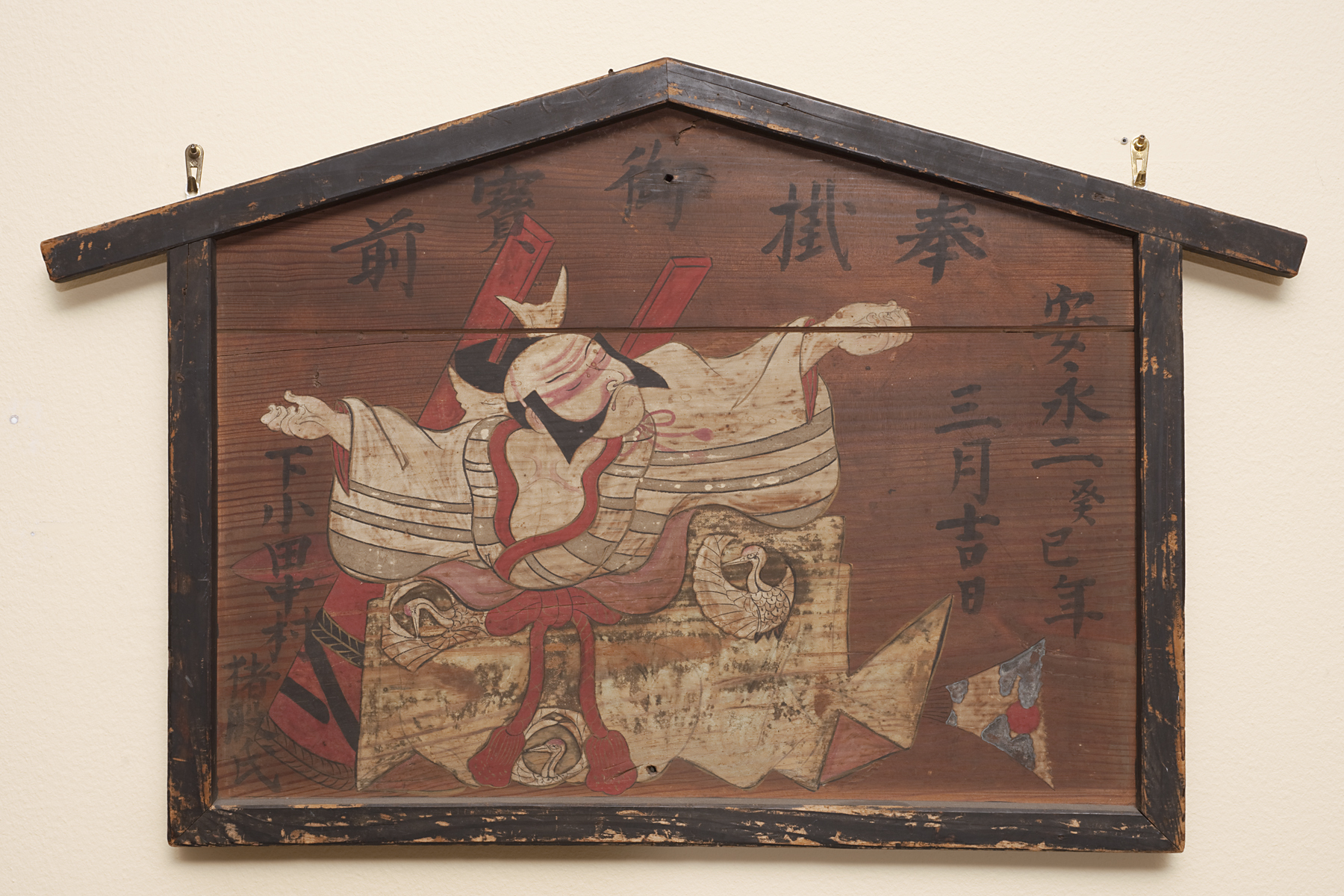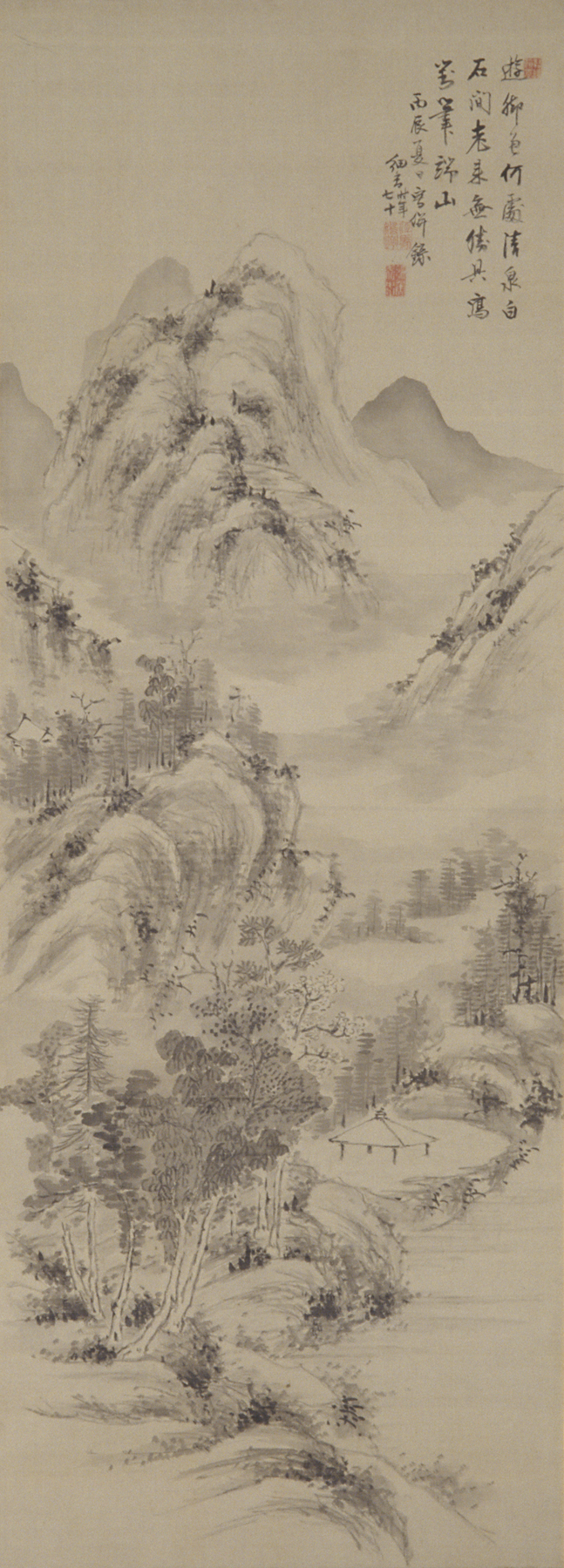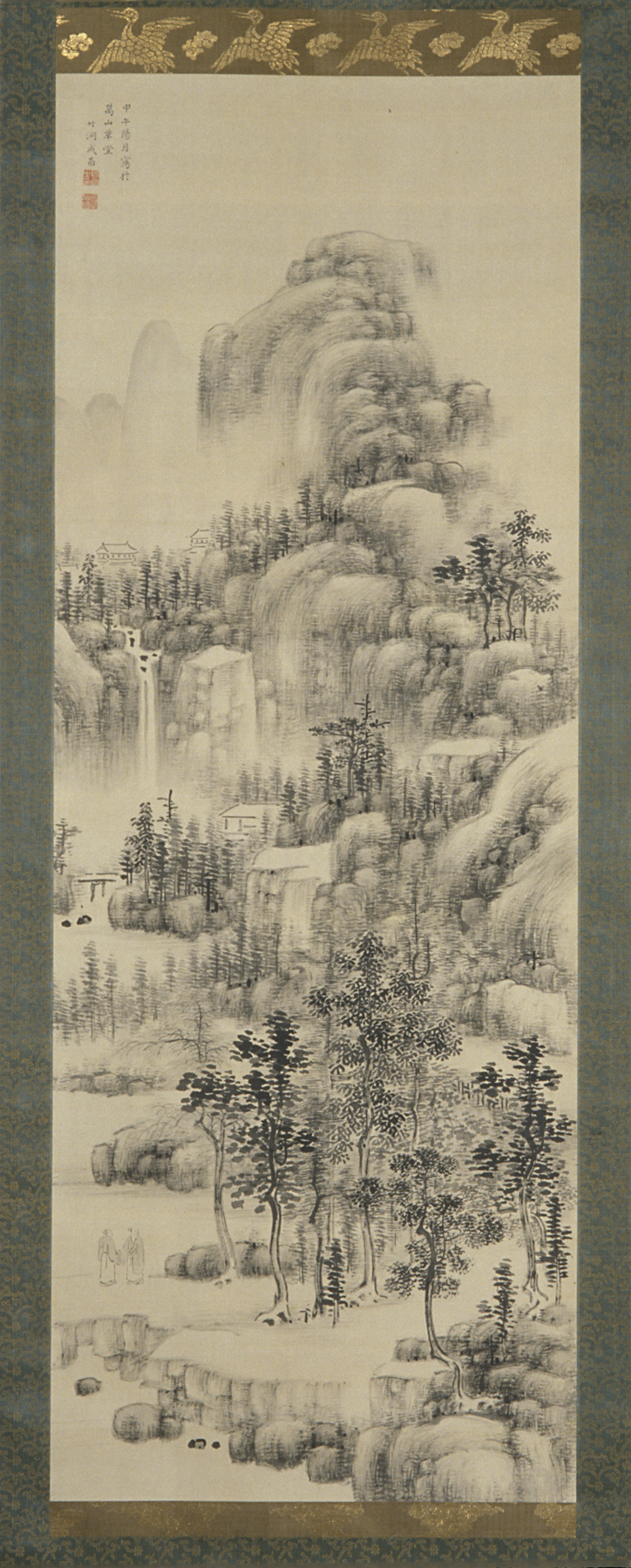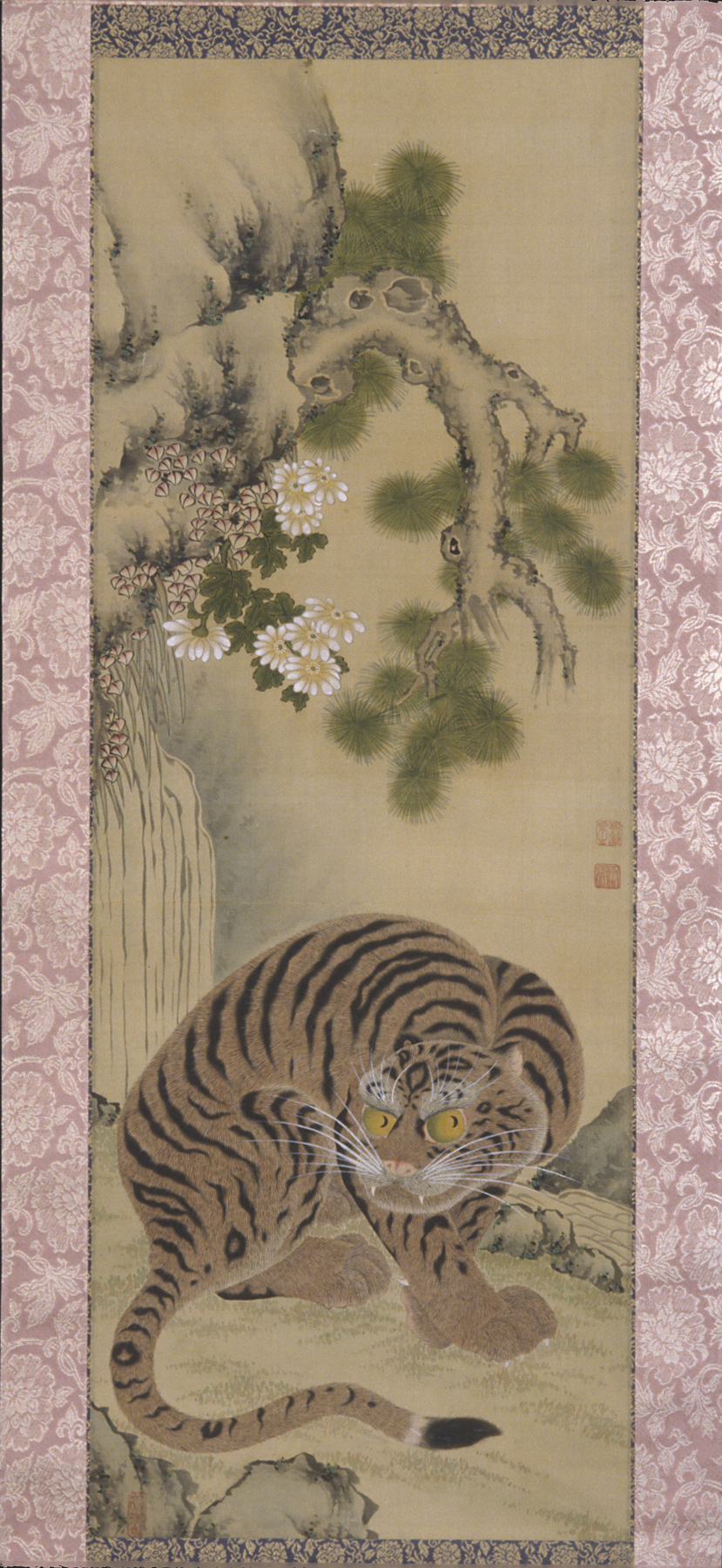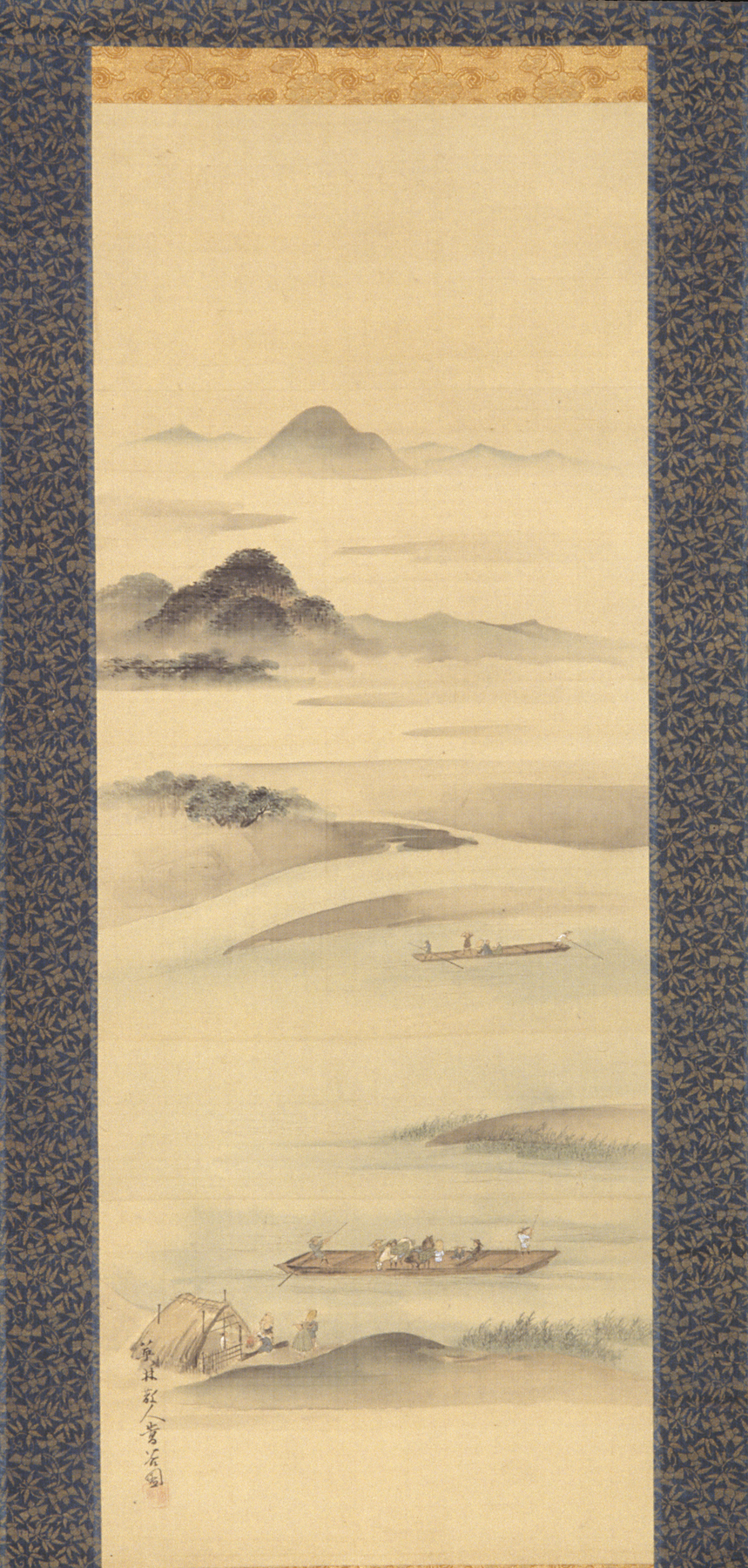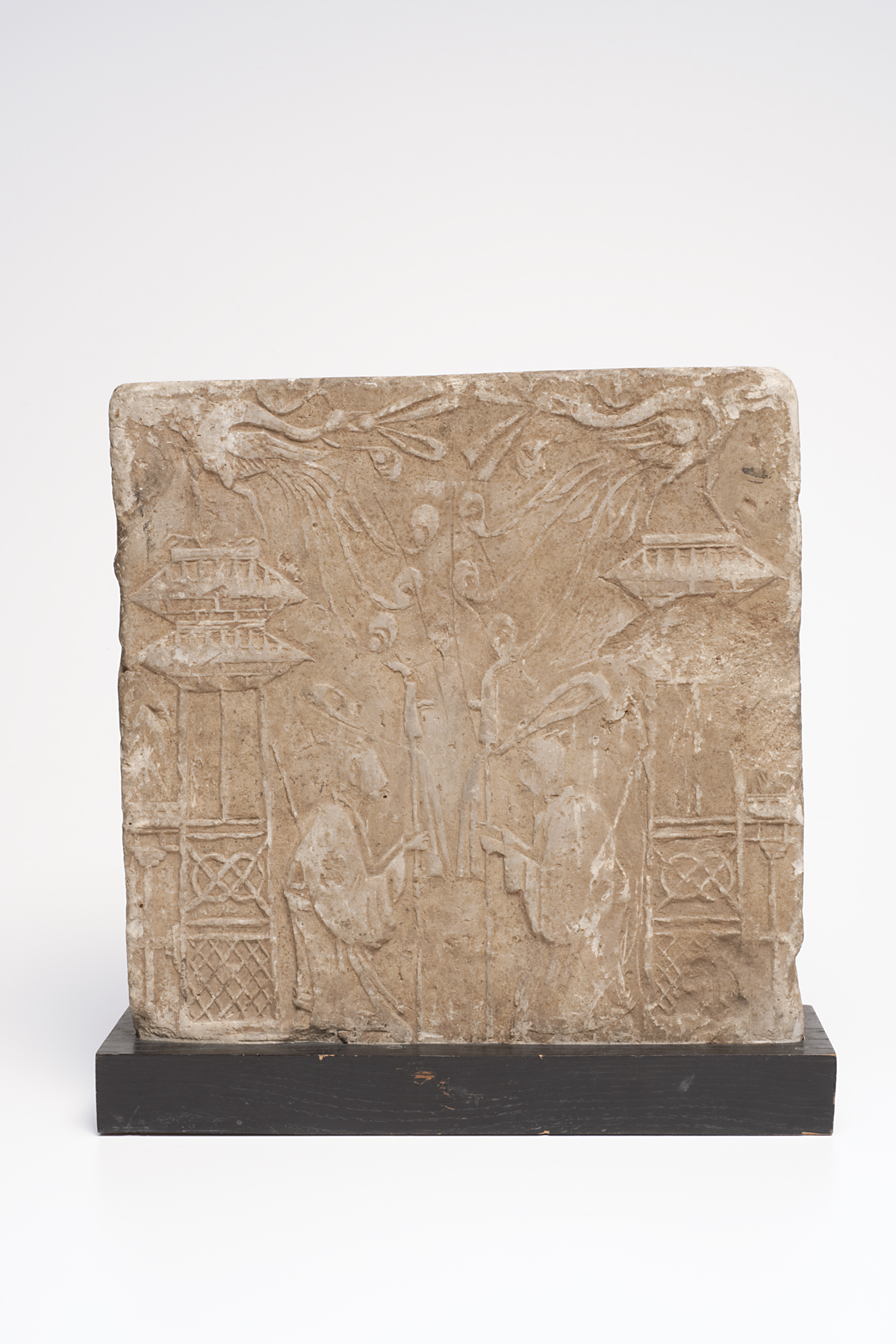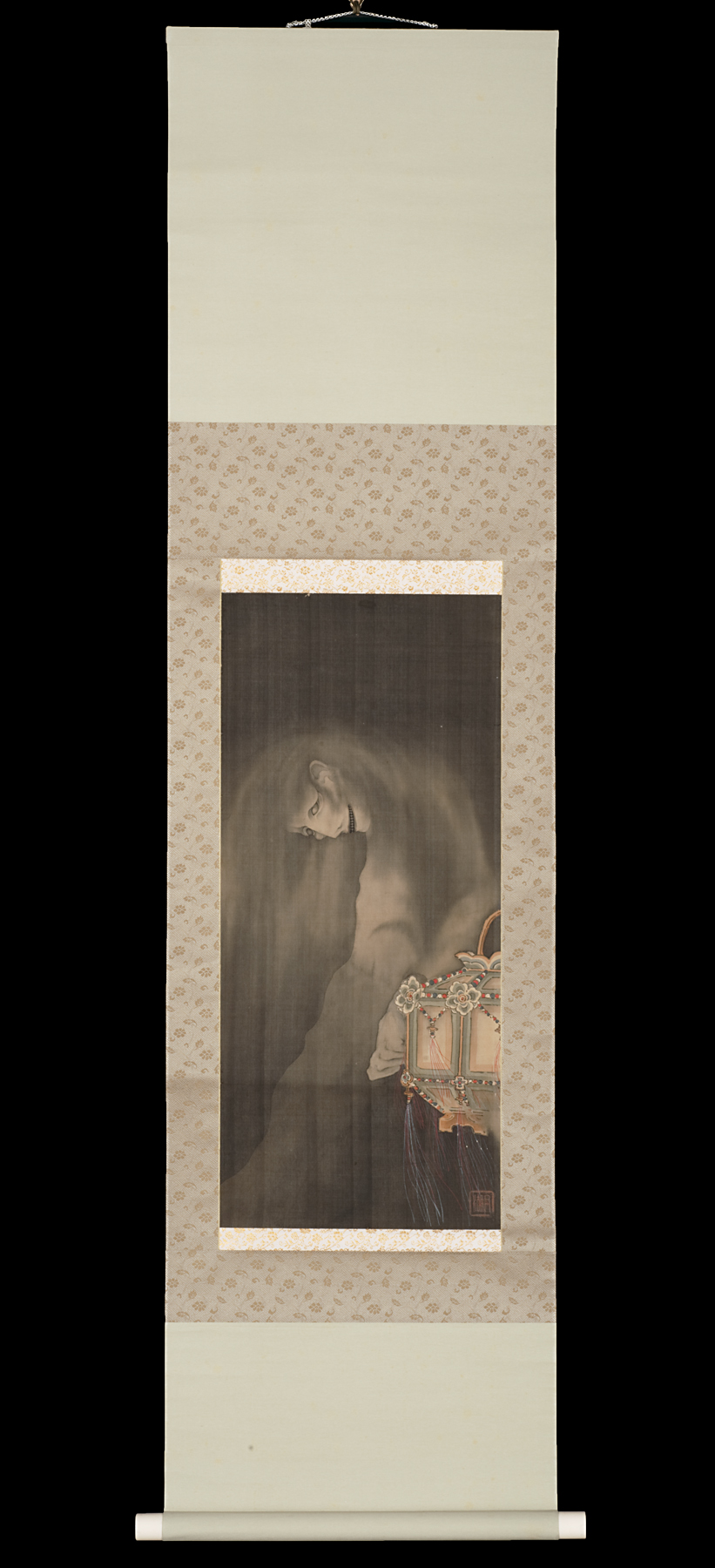Teaching Gallery: Japanese Prints and Paintings
Exhibition
Exhibition Overview

Teaching Gallery: Japanese Prints and Paintings
November 9, 2010–December 5, 2010
White Gallery, Spencer Museum of Art, University of Kansas, Lawrence, Kansas
Japanese prints and paintings selected for Sherry Fowler’s HA 482/782, Japanese Painting and HA 467, Honors History of Japanese Art, on view through December 5
Works of art
Okamoto Shūki
Peacock on a Rock,
early 1800s, Edo period (1600–1868)
Utagawa Kunisada
Portrait of the actor Bando Hikosaburō V as Iwasuji,
1862, Edo period (1600–1868)
Gōshō Mandara (Mandala of Amitābha’s Welcoming Descent),
possibly 1800s, Edo period (1600–1868)
Utagawa Hiroshige
#49 Sakanoshita gankutsu no Kannon (Cave shrine of Kannon at Sakanoshita),
1855, 7th month, Edo period (1600–1868)
Utagawa Hiroshige
Hira no bosetsu (Evening Snow on Mt. Hira),
circa 1834, Edo period (1600–1868)
Torii Kiyomitsu I
actors Hangorō II and Hikosaburō II,
late 1750s, Edo period (1600–1868)
Suzuki Harunobu
courtesan offering a pipe to Bodhidharma,
1765, Edo period (1600–1868)
Shunkōsai Hokushū
Onoe Kikugoro III as Ghost of Oiwa,
1826, 1st month, Edo period (1600–1868)
Utagawa Kuniyoshi
(The miraculous gourd guarded by sacred snake which appeared in the garden of Emaro in Sanuki province around the time of the birth of Prince Shotoku),
circa 1840 (later printing), Edo period (1600–1868)
Utagawa Kuniyoshi
#49 Lantern Ghost of Oiwa (Hebiyama; Snake Mountain),
circa 1845–1847, Edo period (1600–1868)
Shunbaisai Hokuei
Iemon Nyōbō Oiwa (Lantern Ghost of Oiwa),
circa 1831, Edo period (1600–1868)
Yokoi Kinkoku
Nehan (Death scene of a famous poet),
late 1700s–early 1800s, Edo period (1600–1868)
月岡芳年 Tsukioka Yoshitoshi
Priest Raigō of Mii Temple Transformed into a Rat,
1891, Meiji period (1868–1912)
Fūgai Ekun
Daruma crossing the river,
late 1500s–early 1600s, Momoyama period (1573–1615) or Edo period (1600–1868)
Kakujujo Meirindō
Bandō Hikosaburō as Hayano Kanpei and Sawamura Tanosuke as Okaru,
1862, 3rd month, Edo period (1600–1868)
Ema (votive plaque),
1773, Edo period (1600–1868)
Ema Saikō
Landscape,
1856, Edo period (1600–1868)
Nakabayashi Chikutō
Summer Landscape,
1834, Edo period (1600–1868)
Tiger,
1900s
Kō Sūkoku
Landscape with barges on river,
late 1700s, Edo period (1600–1868)
Shima Seien
Spring Pony Dance (harukoma),
circa 1930
Kannon (Avalokitesvara),
1300s–late 1400s, Nambokuchō period (1337–1392) to Muromachi period (1338–1573)
Kawanabe Kyōsai; Sawamuraya Seikichi
Jigoku dayū (Hell Courtesan),
1874, Meiji period (1868–1912)
Utagawa Hiroshige
#51 深川万年橋 Fukagawa mannenbashi (Mannen Bridge in Fukagawa),
1857, Edo period (1600–1868)
tomb tile,
circa 200 CE, Eastern Han dynasty (25 CE–220 CE)
Gekko
Oiwa (The Lantern Ghost),
early 1800s, Edo period (1600–1868)

